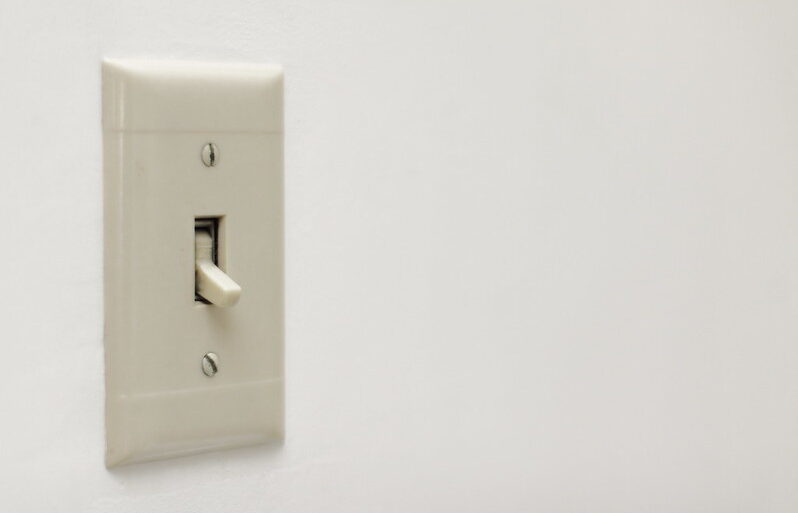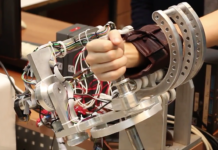A switching system is a dynamical system that consists of a set of subsystems and a discrete switching event between them. The general behavior of a switching system is governed by ![]() . Switch signal
. Switch signal ![]() is a piecewise-constant map from time to an index set representing subsystems [1].
is a piecewise-constant map from time to an index set representing subsystems [1].
There are three categories that classify the stability analysis methods encountered in switched systems. The first one is to find common Lyapunov functions so that the switching systems are stable under any arbitrary switching signal. The second one is to construct certain switching signals. The third category is to restrict the switching signals. We can restrict the switching signals to those with the property that the time interval between any consecutive switching times is larger than a certain value, so-called dwell time. The switched delay system is asymptotically stable if all of the candidate subsystems are asymptotically stable and the dwell time is large enough.
A dwell time presents in many applications such as gear shifting car, and two different dynamics (i.e., in contact with the environment or not) of a teleoperation robotic system. Furthermore, fast switching can cause chattering problems. Furthermore, dwell time-based stability and stabilization methods are used in complex systems such as impulsive systems and switching systems involving unstable subsystems. Therefore, stability analysis and stabilization of switching systems with dwell time are becoming increasingly popular.
The main approach to stability analysis with dwell time constraints is to utilize multiple Lyapunov functions. Geromel and Colaneri calculates a upper bound for the minimum dwell time by a constraint with transcendental functions, i.e., ![]() [2]. Clock-dependent multiple Lyapunov functions have stability factors in the form
[2]. Clock-dependent multiple Lyapunov functions have stability factors in the form ![]() . These functions approximate the transcendental functions. Allerhand and Shaked employ piecewise linear Lyapunov functions, which form a convex set in system matrices, to approximate the transcendental functions [2]. Xiang shows that both stability criteria in [2] and [3] are equivalent when a sufficiently large number of decision variables and linear matrix inequalities present in the piecewise linear approximation [4]. Briat compares approximation by the piecewise linear functions and by the sum of squares polynomials in terms of conservatism and computational complexity [5].
. These functions approximate the transcendental functions. Allerhand and Shaked employ piecewise linear Lyapunov functions, which form a convex set in system matrices, to approximate the transcendental functions [2]. Xiang shows that both stability criteria in [2] and [3] are equivalent when a sufficiently large number of decision variables and linear matrix inequalities present in the piecewise linear approximation [4]. Briat compares approximation by the piecewise linear functions and by the sum of squares polynomials in terms of conservatism and computational complexity [5].
We derived sufficient conditions to ensure that the switched delay systems are stable with dwell time constraints. To this end, we utilized clock-dependent Lyapunov-Krasovskii functionals. The piecewise linear functions and sum of squares polynomials approximated the functionals. A combination of bisection and a golden section search algorithm minimized the upper bound of the dwell time. Then, we presented the synthesis of dwell time minimized controllers. Some numerical examples illustrated the effectiveness of the proposed method. The results showed that the novel approach outperforms the previous ones.
References
[1] Liberzon, D. (2003). Switching in systems and control. Springer Science + Business Media, LLC.
[2] Geromel, J. C., and Colaneri, P. (2006). Stability and stabilization of continuous-time switched linear systems. SIAM Journal on Control and Optimization, 45(5), 1915-1930.
[3] Allerhand, L., & Shaked, U. (2011). Robust stability and stabilization of linear switched systems with dwell time. IEEE Transactions on Automatic Control, 56(2), 381–386.
[4] Xiang, W. (2015). On equivalence of two stability criteria for continuous-time switched systems with dwell time constraint. Automatica, 54(0), 36–40.
[5] Briat, C. (2016). Theoretical and numerical comparisons of looped functionals and clock-dependent Lyapunov functions – the case of periodic and pseudo-periodic systems with impulses. International Journal of Robust and Nonlinear Control, 26(10), 2232-2255.
Publications
[1] Koru, A. T., Delibaşı, A., and Özbay, H. (2018). Dwell time-based stabilisation of switched linear delay systems using clock-dependent Lyapunov-Krasovskii functionals. International Journal of Control, 93(5), 1172–1179. (link)
[2] Koru, A. T., Delibaşı, A., and Özbay, H. (2018). Dwell time-based stabilisation of switched delay systems using free-weighting matrices. International Journal of Control, 91(1), 1–11. (link)
[3] Koru, A. T. (2017). Dwell Time Minimization for Switched Delay Systems. Ph.D. Dissertation, Yıldız Technical University. (pdf)
[4] Koru, A. T., Delibaşı, A., and Özbay, H. (2016, June). On dwell time minimization for switched delay systems: Time-scheduled Lyapunov functions. In 13th IFAC Workshop on Time-Delay Systems (TDS) (pp. 37–40), İstanbul, Turkey. (link)
[5] Koru, A. T., Delibaşı, A., and Özbay, H. (2014, December). On dwell time minimization for switched delay systems: Free-weighting matrices method. In IEEE 53rd Annual Conference on Decision and Control (CDC) (pp. 1978–1982), Los Angeles, CA, USA. (link)




